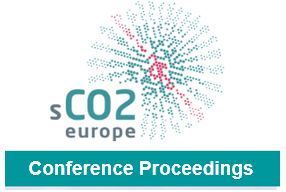Performance analysis of PTES layouts evolving sCO2 for industrial WHR integration
A consistent amount of renewable energy (RES) from nonpredictable sources in the energy mix brings an increasing need of energy storage technologies to support grid stability. At the same time, electrification of industrial processes as well as the more and more common habit of industries to self-produce power via RES or CHP, can make industries a partner in disrupting grid stability. Thermo-mechanical storages can contribute through the use of traditional technologies (rotating machinery) employed in power plants, which are currently used to manage peak demand and grid services, and typically classify as hours-size storages, also capable of providing spinning reserve services to the electrical grid. Among such type of storages, Pumped Thermal Energy Storages (PTES) are a promising technology that enhance the concept of power-toheat-to-power and long duration energy storage, and presents also different layouts and applications. This paper analyse the thermal performance of Pumped Thermal Electricity Storage (PTES) evolving supercritical CO2 (sCO2), comparing different layouts, while valorising waste heat (WH) sources, which are typically in temperature ranges of 100-400°C. WH temperature in this range are difficult to be exploited for traditional energy generation, but they are currently under investigation for the possibility to be valorised via High Temperature Heat Pump. In this sense this quality of Waste Heat could be valorised via PTES. In fact, the use of additional heat, otherwise dumped to ambient, may make the system capable of an apparent round-trip efficiency (RTE) higher than 100%. The use of sCO2 could enhance the techno-economic features of these systems, if compared to similar plants evolving steam or air. Starting from an identified reference case (a cement production plant with WH temperature to be valorized around 350°C), a sCO2-based PTES cycle is presented and analysed in this paper. The waste heat integration to the PTES system has been found to add an undeniable value in terms of RTE. The use of sCO2 enhances the techno-economic features of these systems, the independent charging and discharging system proposed in this study can also provide a keen sense of flexibility. At the same time, the valorisation of low temperature waste heat enables industries to enhance their energy efficiency, limit their operational costs and environmental impact, whilst becoming an active part in the regulation of the grid. Nevertheless, CAPEX of the proposed systems are still quite relevant and only a robust exploitation of the PTES in ancillary service market could attract industrial customers interest on sCO2 PTES.
Vorschau

Zitieren
Zitierform:
Maccarini, Simone et al. (2023): Performance analysis of PTES layouts evolving sCO2 for industrial WHR integration. In: 5th European sCO2 Conference for Energy Systems: March 14-16, 2023, Prague, Czech Republic. S. 206–216. Online unter: https://nbn-resolving.org/urn:nbn:de:hbz:465-20230427-140537-4.
Zitierform konnte nicht geladen werden.
Rechte
Nutzung und Vervielfältigung:
Dieses Werk kann unter einer Creative Commons Namensnennung 4.0 Lizenz (CC BY 4.0)
Creative Commons Namensnennung 4.0 Lizenz (CC BY 4.0)
genutzt werden.
